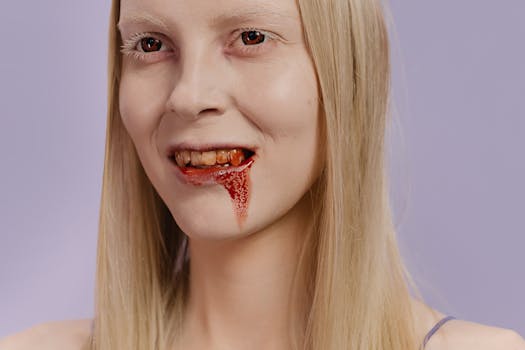Are Vampires Real? The Vampire Myth Busted

Are Vampires Real? The Vampire Myth Busted
Ever wondered if blood-sucking creatures lurk in the shadows? The vampire myth paints vampires as immortal beings with vampire fangs, haunting the night and drinking blood. But are vampires real, or are they just a chilling tale? Join us at omnimyths.com to unravel the origins, allure, and truth behind vampires mythology!
The Story Behind the Vampire Myth
Where did the vampire myth come from? It’s a tale woven from fear, disease, and imagination.
The earliest vampire stories trace back to Eastern Europe in the Middle Ages, particularly in Slavic regions like Romania and Serbia. By the 18th century, “vampire panics” swept villages, with people digging up corpses to stake them, fearing the dead were rising to feed on the living (University of Wisconsin, 2022). These beliefs, rooted in vampires in history, likely stemmed from misunderstood diseases like porphyria, which causes pale skin and light sensitivity. The 1897 novel Dracula by Bram Stoker cemented vampires as gothic icons, blending folklore with fiction.
From Transylvania to modern-day New Orleans, the vampire myth spread globally, fueled by tales of famous vampires like Dracula. In places like India, stories of vetala—ghostly beings possessing corpses—echoed similar fears, showing how universal the myth is (The Journal of Folklore, 2023).
Why We’re Hooked on Vampires
Why does vampires mythology captivate us? It taps into primal fears and forbidden desires.
Picture Maria, a teenager in Chicago, binge-watching Twilight and dreaming of a brooding vampire romance. She’s not alone—people from Tokyo to Cape Town are drawn to vampires’ mix of danger and allure. The idea of immortality, seductive power, and vampire teeth sinking into a victim feels thrilling yet terrifying (American Psychological Association, 2023). Vampires embody our fascination with the unknown, from eternal life to defying death.
Pop culture keeps the myth alive. From famous vampires like Lestat in Interview with the Vampire to games and X posts about vampire names male like Vlad or female vampire names like Selene, the vampire craze thrives (Forbes, 2025).
Debunking the Vampire Myth
No Evidence of Real Vampires
Are vampires real? No historical or scientific records confirm blood-drinking immortals. Folklore about vampires likely arose from diseases like rabies, which causes aggression and light sensitivity, or premature burials, where “corpses” seemed alive (Smithsonian Institution, 2023). The vampires in history are myths, not monsters.
Burial Practices Explained
In medieval Europe, bodies were staked or buried face-down to prevent “vampires” from rising. These rituals, tied to vampires mythology, addressed bloating corpses or grave-robbing fears, not supernatural beings. Archaeological digs in Bulgaria (2014) found “vampire graves” with stakes, showing cultural panic, not proof (National Geographic, 2023).
Why Can’t Vampires Enter Homes?
The idea that vampires can’t enter homes without invitation reflects folklore’s emphasis on boundaries and consent. It symbolized protecting the home as a sacred space, common in Slavic and African tales of spirits (University of Oxford, 2022). It’s a narrative rule, not a biological one, debunking vampire powers.
Types of Vampires in Mythology
- Strigoi (Romania): Restless dead who drink blood.
- Jiangshi (China): Hopping corpses draining life force.
- Asanbosam (Ghana): Tree-dwelling creatures with iron teeth.
These differences show vampires as cultural fears, not real entities (The Journal of Folklore, 2023).
The Myth’s Modern Spin
The vampire myth isn’t stuck in the 18th century—it’s thriving today with new twists.
Take Alex, a gamer in London, obsessed with vampire-themed games, naming characters with vampire names male like Damon or female vampire names like Carmilla. Shows like True Blood or The Vampire Diaries reimagine vampires as romantic antiheroes, not just monsters. In pop culture, famous vampires like Edward Cullen or even quirky kid vampire characters in movies keep the myth fresh (The Guardian, 2024).
Posts on X about where do vampires live often joke about moody mansions or urban hideouts, showing the myth’s playful evolution.
The vampire allure also sparks subcultures. From New Orleans’ “vampire” communities to cosplayers sporting vampire fangs at conventions, the myth fuels creativity and identity (Forbes, 2025).
How to Enjoy the Vampire Myth Safely
Appreciate the Stories
- Read classics: Dive into Dracula or explore global tales like China’s jiangshi.
- Watch smartly: Enjoy vampire shows but recognize they’re fiction.
- Engage creatively: Try writing your own vampire names male or female vampire names.
Avoid Real-Life Myths
- Skip “vampire cures”: Ideas like how to cure vampirism Oblivion are game mechanics, not reality.
- Question rituals: Don’t fall for modern “vampire protection” scams online.
These tips keep the vampire myth fun without blurring fact and fiction (National Geographic, 2023).

Real-Life Vampire Fascination
Consider Priya, a writer in Mumbai, who started a vampire book club after watching What We Do in the Shadows. Her group debates where do vampires live, imagining gothic castles or modern cities, bonding over the myth’s charm. Or take a New Orleans festival celebrating famous vampires, drawing thousands to explore vampires in history. These stories show how the vampire myth inspires imagination without needing real fangs (Forbes, 2025).
Conclusion
The vampire myth weaves a spell with its mix of fear, allure, and mystery, but are vampires real? No—science points to folklore and disease, not undead creatures. Enjoy the tales, from vampire fangs to famous vampires, but keep your stakes in fiction. Explore more supernatural myths at omnimyths.com!
Frequently Asked Questions
Q: Are vampires real?
A: No, are vampires real is a myth—vampires are folklore, not fact, rooted in diseases like porphyria or burial fears. No evidence supports blood-drinking immortals. Stories persist due to cultural fears and pop culture’s allure. They’re fascinating but fictional (Smithsonian Institution, 2023).
Q: Why can’t vampires enter homes without invitation?
A: The idea that vampires can’t enter homes reflects folklore’s emphasis on sacred spaces and consent. In Slavic tales, homes were protected from spirits. It’s a narrative device, not a real rule. This adds mystique to vampires mythology (University of Oxford, 2022).
Q: What are the types of vampires in mythology?
A: Types of vampires in mythology include Romania’s strigoi (blood-drinkers), China’s jiangshi (life-draining hoppers), and Ghana’s asanbosam (tree-dwellers). Each reflects local fears of death or spirits. They’re cultural stories, not real creatures. Global myths share the undead theme (The Journal of Folklore, 2023).
Q: Who are some famous vampires?
A: Famous vampires include Dracula from Bram Stoker’s novel, Lestat from Interview with the Vampire, and Edward Cullen from Twilight. They shape modern vampires mythology as romantic or monstrous figures. Pop culture keeps them iconic. Their allure drives fascination worldwide (The Guardian, 2024).
Q: Where do vampires live in mythology?
A: Where do vampires live varies by culture—Transylvanian castles for Dracula, forests for asanbosam, or villages for jiangshi. Myths place them in dark, isolated spots symbolizing fear. Modern stories add urban settings. It’s all fiction, not fact (National Geographic, 2023).
Q: Why do vampire myths persist?
A: Vampire myths endure due to their mix of fear, romance, and immortality, appealing to human desires. From vampire fangs in movies to vampire names male in games, pop culture fuels fascination. They reflect universal anxieties about death. Social media keeps them trending (Forbes, 2025).